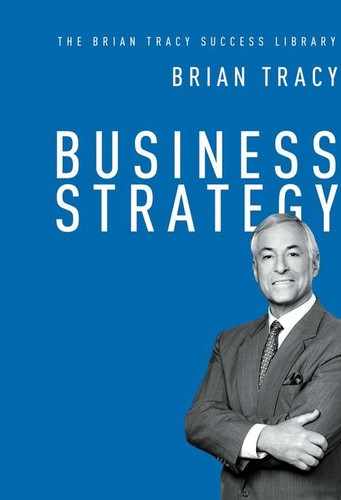Five Questions in Strategic Planning
Many management fads come and go, with greater or lesser success. But one management skill is always the most valuable, and that is the ability to develop a clear, workable strategic plan that gives you a competitive advantage in your marketplace. There are four basic reasons why you set strategy for your business:
1. To increase your return on equity. It is to earn more money on the equity, or the amount of money that you have invested in your business. Equity represents ownership. It is different from return on investment (ROI) in that it represents out-of-pocket funds. The first goal of strategy, then, is to increase the amount of money you are earning on the resources that you and others have personally invested in the enterprise.
2. To reposition your company. You may find that your company and your products or services are under assault from your competitors. You may find, as Apple did, that you have to reposition your company with new products and new services in new markets with new technologies.
3. To maximize your strengths and your opportunities. Look at what it is that you do extremely well, and what your key opportunities are in the marketplace, and then move rapidly to take advantage of them.
4. To form a basis for making action decisions now. The whole purpose of strategy is to plan and prepare to take actions that are different from what you might have done in the absence of your new strategy.
Strategic planning is not a passive activity. Strategic planning is the process of thinking through the action steps that you are going to take to achieve your goals and objectives.
Alexander’s exercises in strategy were not part of a passive or theoretical exercise. They were aimed entirely at action. Alexander was the quintessential man of action.
Five Questions to Ask and Answer
There are five key questions that you can ask and answer over and over in strategic planning. Follow this process.
ASSESS YOUR CURRENT SITUATION
Question number one is to ask yourself: Where am I now? Identify your business, your customers, your markets, your competitors, and your financial strengths and weaknesses. An accurate analysis of your current situation is the starting point of all strategy.
REEXAMINE YOUR PAST
Question number two is about your past. Look at your history. How did you get to where you are today? What were the critical steps that you took, going back a few years or even to the beginning of your business? What did you do right? What did you do wrong? What lessons did you learn? What has changed since you began in this business (recognizing that everything changes)? What were the events that got you where you are now, for better or worse?
CREATE YOUR PERFECT FUTURE
Question number three in setting strategy is to define your ideal future. Where do you want to be in the future? Where do you want to be one year from now, and in two, three, five, or even ten years? Where do you want to be personally, and where do you want to be as a corporation? Clearly defining your ideal future on the basis of where you are today and how you got here is critical.
PREPARE THE NEXT STEPS TO TAKE
Question number four is: How are you going to get there? How are you going to get from where you are today to where you want to be in the future, with the people you have, the resources you have, and the market you are working in?
My favorite exercises to answer this question are either brainstorming or mindstorming. In brainstorming, you go around the table and challenge each other to come up with at least twenty answers to the question, “What can we do to create a perfect future for this company?”
In mindstorming, you write your question at the top of a sheet of paper and then challenge yourself to generate twenty answers to that question. This is an amazing exercise for developing ideas and answers you can use to achieve any goal.
MAKE A CHECKLIST
Question number five is: What do you need? What additional skills, resources, or money will you require to achieve your strategic objectives sometime in the future?
One of the most powerful tools that you can use is the simple checklist. Begin to make a list of all the things that you would have to do and all the steps you would have to take to get from where you are today to where you want to be at some time in the future.
Brilliant on the Basics
When Vince Lombardi became the head coach of the Green Bay Packers in 1959, he was asked what he was going to change or do differently. He replied that he was not going to change the players, the plays, or the training schedule. Instead, they were going to become “brilliant on the basics.”
To be successful in strategic planning and in business, you must become brilliant on the basics of strategic planning, and you do that by continuing to ask and answer the right questions.
